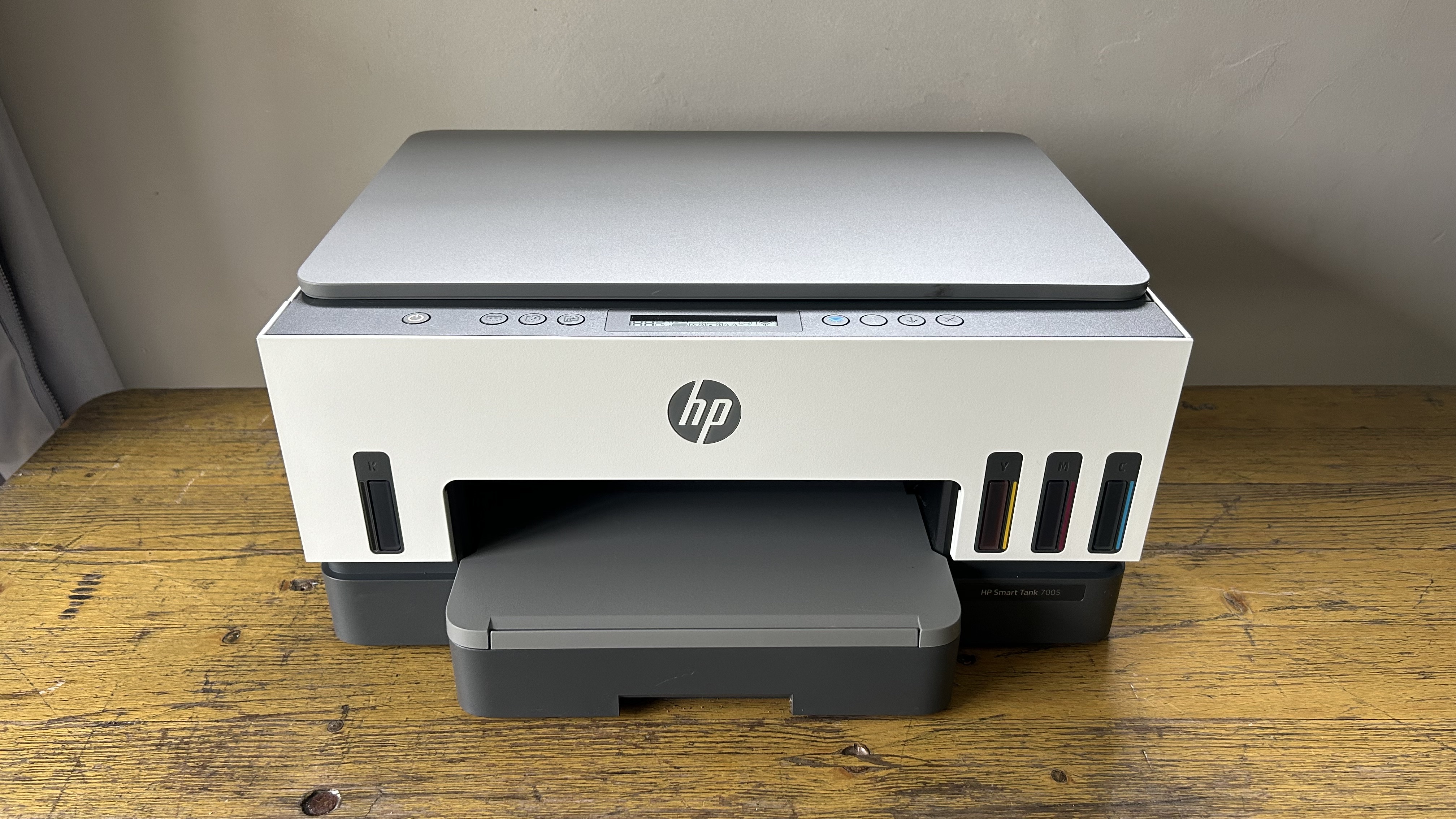
Type: color ink tank printer
Functions: Print, scan, copy, mobile fax (send only)
Connectivity: USB, Wi-Fi
Data storage slots: none
Print speed: 15ppm (mono)
Max paper size: Letter/A4
Max print quality: 4,800 x 1,200 dpi
Memory: 128MB
Apple AirPrint: yes
Consumables included: 5 x 80ml ink bottles (8,000 color or 6,000 black pages)
Dimensions/Weight: 723 x 435 x 285 mm (WxDxH)/71.4lb/32.4kg
The HP Smart Tank 7001 (or 7005 in the UK and Europe) is a refillable inkjet aimed at the home or the office. It’s a neat desktop design with enough room for 250 sheets of Letter paper in its protruding tray and a Letter-sized scanner bed on top. Self-healing dual-band wi-fi and Bluetooth are built in and it can auto-duplex, but there’s no multipurpose input tray and no touchscreen.
If that seems mean for a printer costing around US$260 (£230), remember that this is a supertank, so you’ll save money on ink in the long term and there’s a generous amount of ink in the box. But Smart Tank makes up a relatively small part of HP’s printer line-up so let’s see how it compares to the best ink tank printers, from MegaTanks to EcoTanks, currently crowding the market.
HP Smart Tank 7001: Design and build
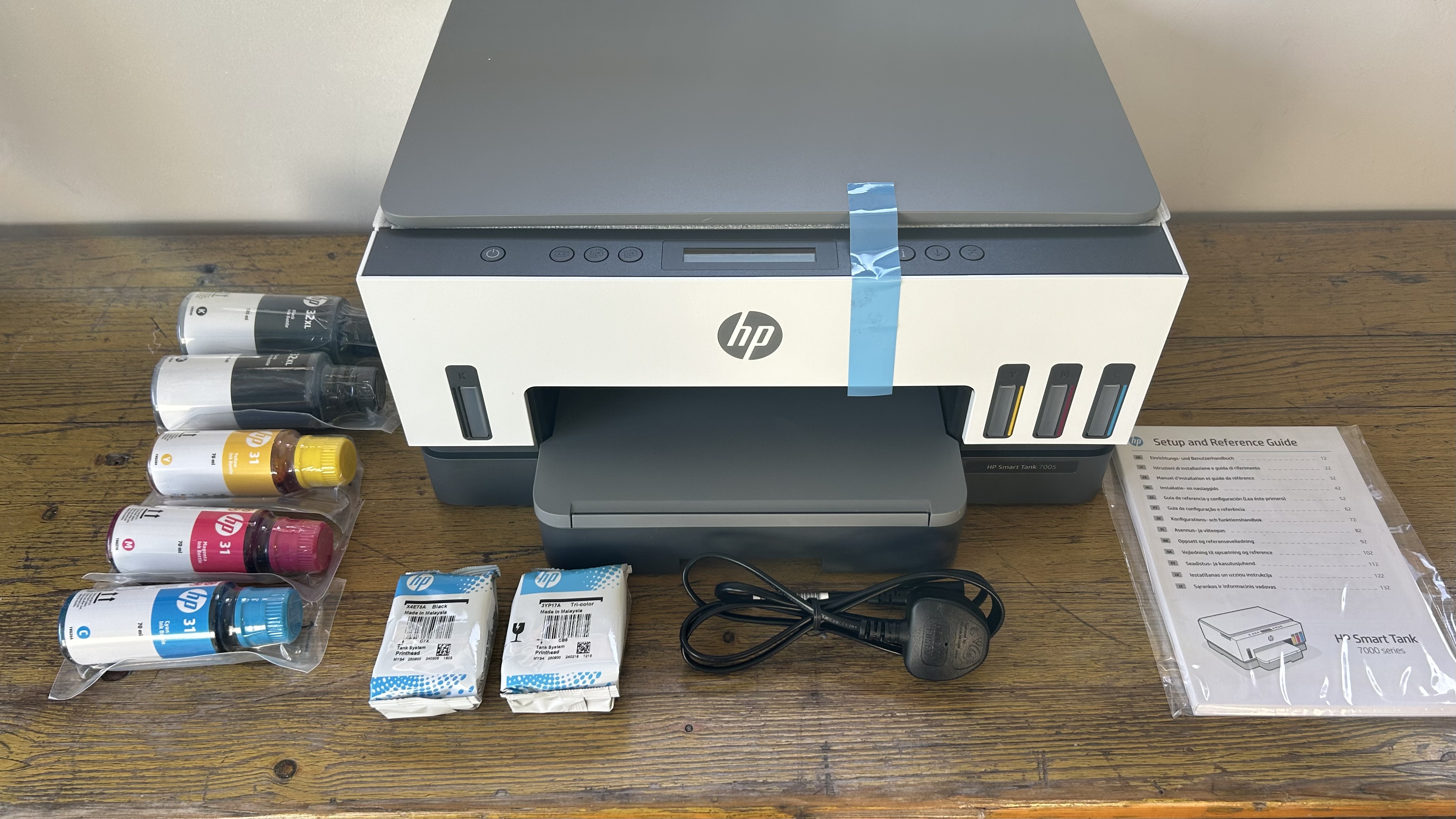
The HP Smart Tank 7001 (let's stick with the US name now) looks pretty sharp with its crisp lines, light basalt livery and seamlessly integrated ink tanks. It’s only a pity the paper tray sticks out at the front like that, because it makes the footprint larger than that of its two nearest rivals, the Canon PIXMA G3270 and Epson EcoTank ET-2850. But being larger, does enable it to hold more paper. With room for 250 sheets of Letter, or A4 paper instead of the 100-sheet capacity of its peers, it could serve an office more efficiently. The four ink reservoirs are about the same size as those of the Canon and Epson, holding 70ml of each colored ink and 135ml of black. That’s enough to keep you printing for two years, according to HP in the US. In the UK, HP says three years because there’s one extra bottle in the box, so I’ll take both claims with a very large pinch of salt. Clear plastic windows into these tanks make it easy to check your levels at a glance, which is important because running out of ink can allow problematic air bubbles into the system. The tiny two-line display is not backlit, so it’s harder to see, as are the small black buttons of the up-facing control panel.
The plastic casing and the various plastic flaps all feel rather flimsy, especially the scanner cover. The glass scanner platen is also Letter-sized, offering a more satisfactory way to scan documents than a phone camera. There’s a connection at the back for a USB data cable, but no front USB Host port and no Ethernet port. Lift up the scanner and you’ll see the lids of the four ink tanks and the two moving printheads. Unlike Epson and Canon’s printers, these print heads are replaceable, which could be an advantage.
HP Smart Tank 7001: Features & specifications
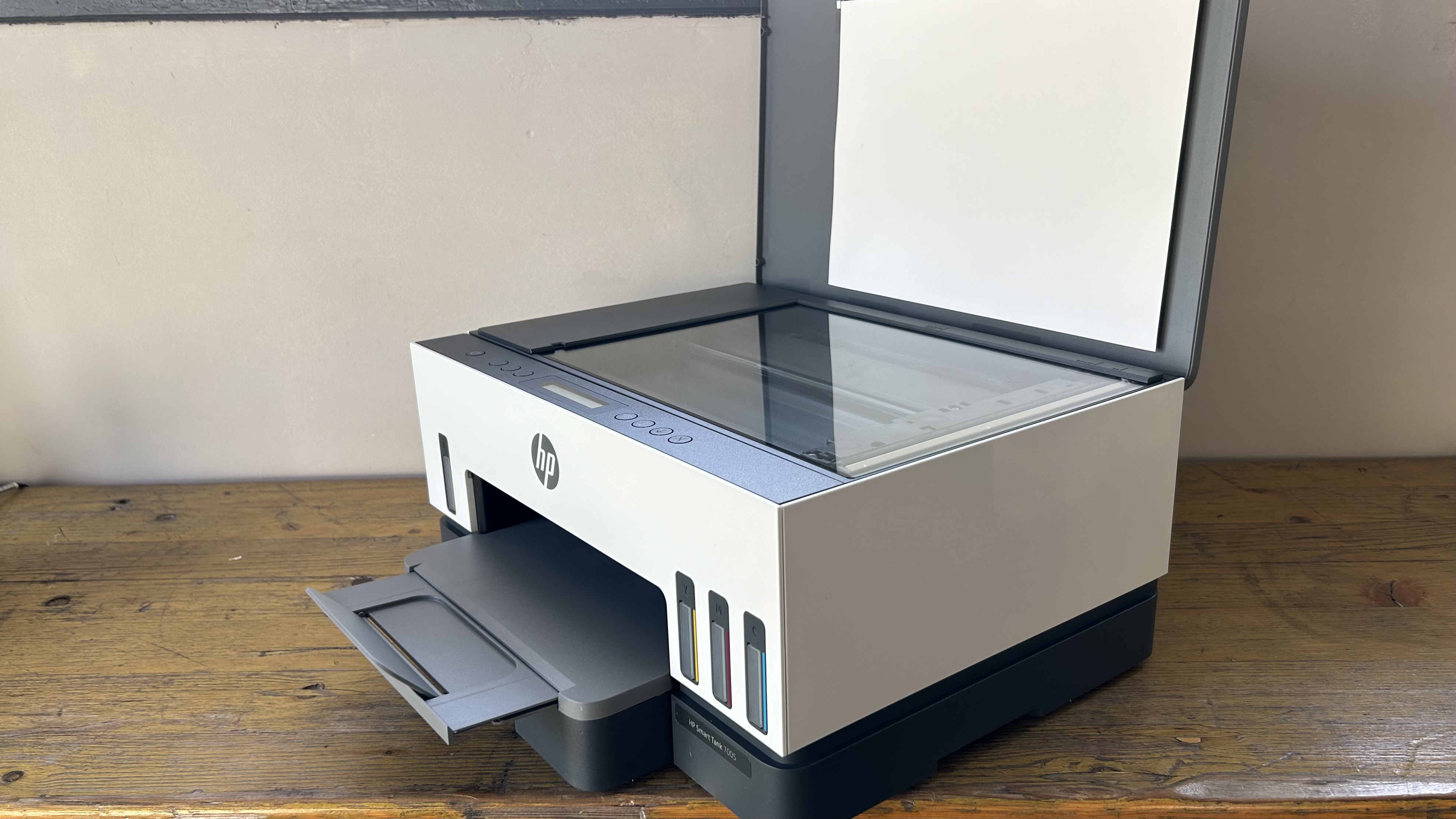
Compared to the best all-in-one printers at this price point, the features list might look a little thin, but remember that this is a supertank so you’re benefiting from the low running cost and plentiful inbox ink. There’s no touchscreen, for example, no USB Host port, no ADF (automatic document feed), no NFC and no multipurpose input. It’s a similar story with Epson and Canon’s entry-level ink tanks. It does come with dual-band wi-fi with Apple AirPrint compatibility and a scanner. It does not possess an inbuilt fax modem, but it can receive and print a fax by using the HP Smart app to harness your smartphone. If you want to send a fax, you’ll need to step up to the $400 HP Smart Tank 7602, which also sports an ADF.
One thing the HP Smart Tank 7001 does offer over and above the competition is Bluetooth, which I found to be a real advantage during the initial setup procedure.
HP Smart Tank 7001: Setup and operation
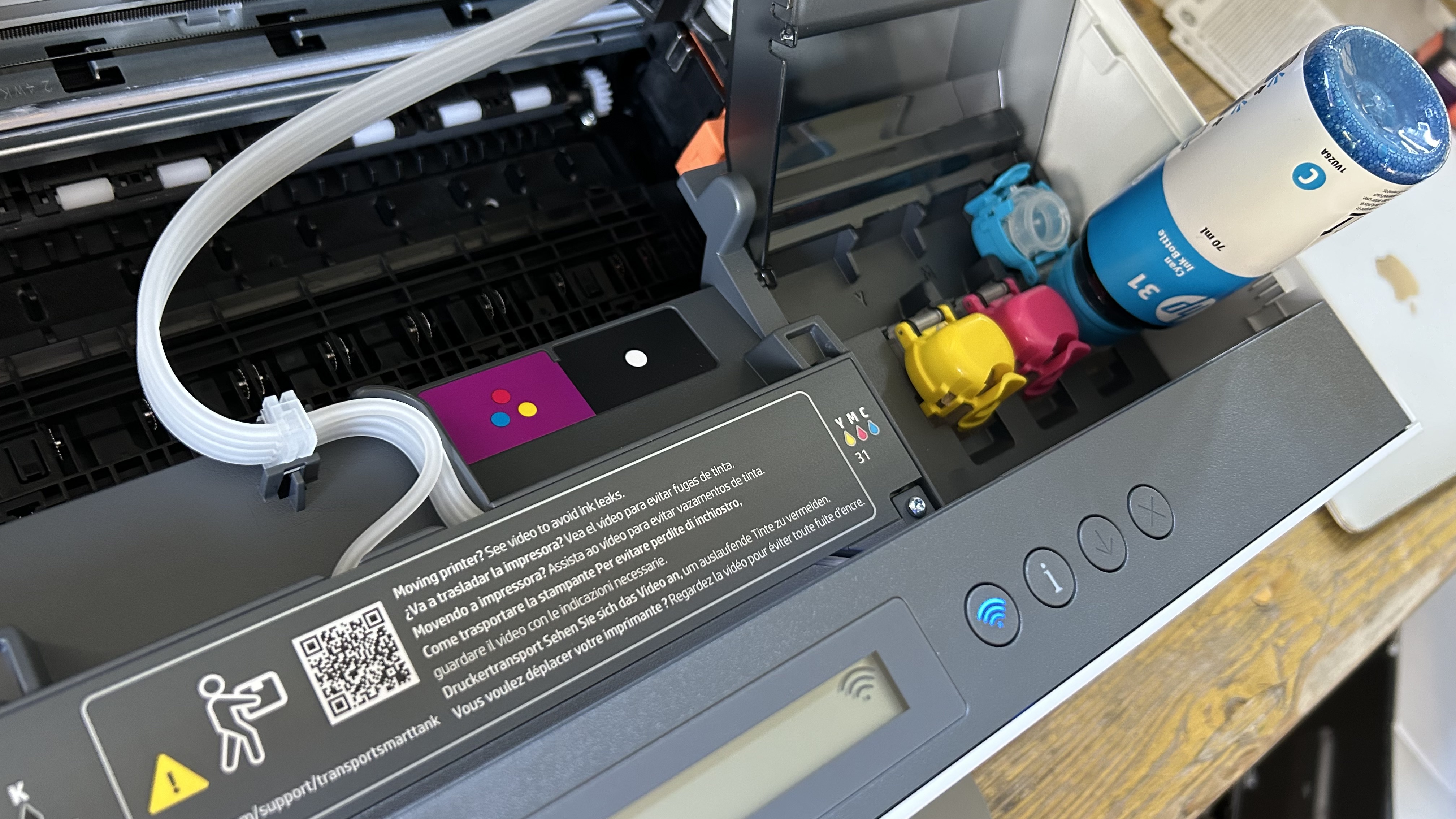
The setup process for the HP Smart Tank 7001 is similar to any new inkjet, except for two extra steps. You have to pour your ink from bottles into the tanks and attach the two printheads. The easiest way to get started is to download HP’s companion app called HP Smart and use that to get your printer onto your local wi-fi network. Making a wi-fi connection with a new printer always feels like it’s in the hands of the gods, but Bluetooth connecting is more reliable. Letting your smartphone then share your wi-fi details saves you from having to type in the password, something that would take ages using the printer’s primitive non-touchscreen display.
Pouring ink into the tanks is not too fiddly, but neither is it completely fool-proof, as it is with Canon and Epson’s systems. I’ve read user reviews where new owners have spilled ink and even poured it into the wrong tank, so be careful! I found that pouring in three quarters of each bottle was not enough to satisfy the HP’s sensors. Unlike Canon and Epson, you need to fill to the brim to proceed with setup. The only disadvantage of a ink tank printer is that transporting them when the tanks are full is a potential hazard.
In operation, the HP Smart Tank 7001 is fine, although there’s no denying that it would be easier with a touchscreen interface. The two-line display is not easy to see. HP are probably assuming that we’ll all be using the app on our smartphones and laptops to control the printer and to be fair, that is the best way to do it. HP Smart works equally well on iOS, Android, Windows, Mac and Chrome. The only problems I encountered were paper jams, or to be precise, the printer’s failure to turn pages in order to print the other side when auto duplexing. This happened any time the paper in the tray was less than perfectly flat.
HP Smart Tank 7001: Performance
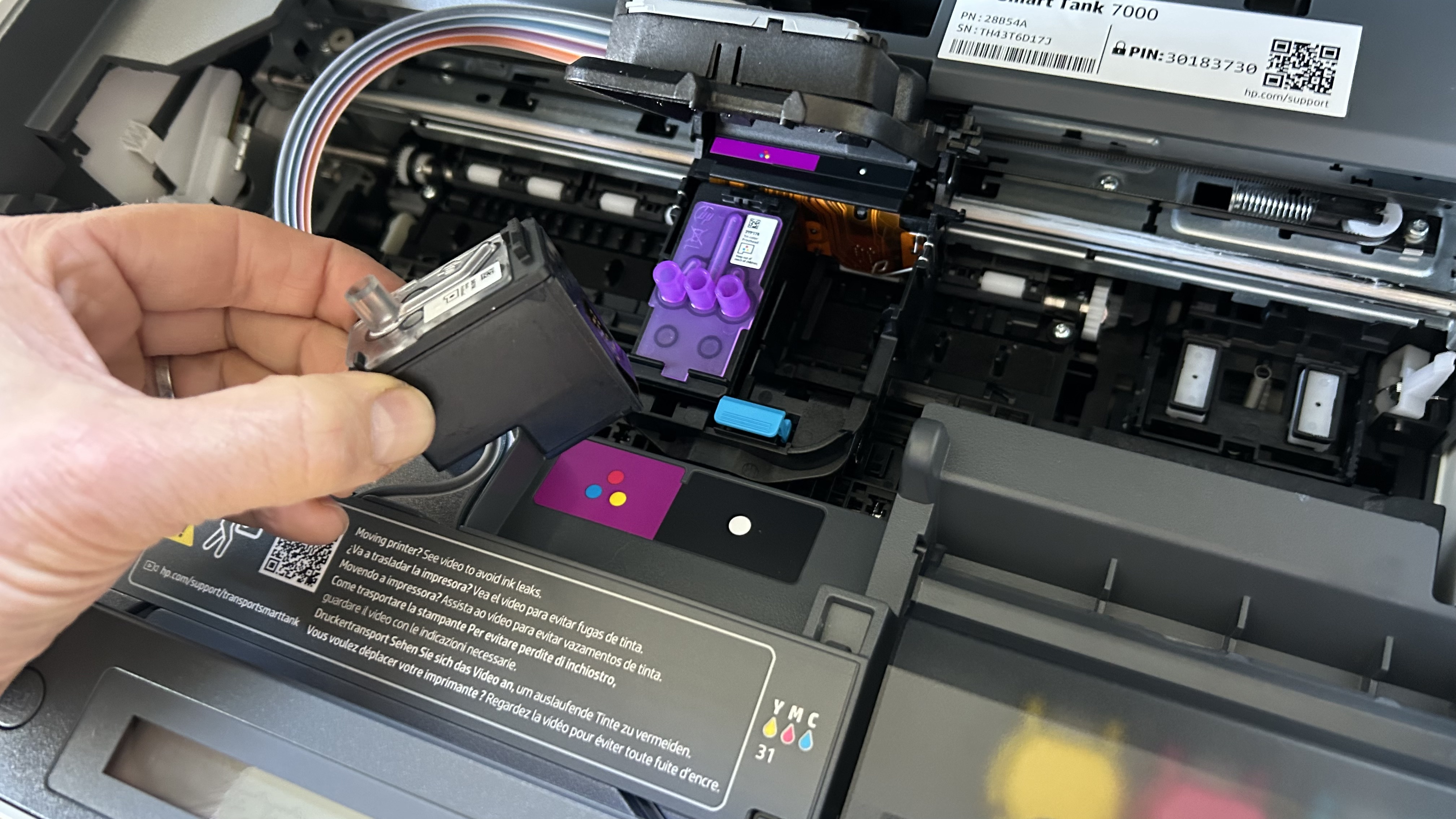
The HP Smart Tank 7001 performed some tasks well, and others poorly. Consecutive pages of text appear at a rapid and reliable rate of 15 per minute in simplex mode and the characters look black and bold with no overrun. At point size four, everything is still legible and whenever I try to smudge the print with my thumb as the pages emerge, the pigment ink is already set and smudge resistant. The same is true in draft mode. The print is just slightly paler and less sharp, but still acceptable. The problem comes when auto duplexing as any slight crease in the paper prevents the printer from turning the page successfully. After printing one side, the paper is thrust out and drawn back in ready to turn, except that it cannot seem to align the paper in order to pull it all the way in. You can play tug of war with the stricken page until it’s aligned correctly, but most of the time the printer gives up and flashes an error message instead. From trawling user reviews, I can see I’m not the only one to experience this problem.
In simplex mode, the HP printed successfully on a range of paper stock, from 4” x 6” glossy photo paper to card up to 200g/m2 in weight. That’s not actually very thick and the fact that its rivals can handle 300g/m2 card suggests that the HP just isn’t very good at handling paper. Printing in color shows how vibrant HP’s ink is. Color documents really catch the eye with their bright reds and blues. With photos on photo paper, the colors look a little too bright making them feel unrealistic. So, while photos are initially quite pleasing for their strong detail and bold colors, they don’t stack up against photos from a dedicated photo printer.
The scanner worked flawlessly despite the disconcerting way its light flashes the whole time the scanner lid is open. You can hit the copy button on the machine or scan using the HP Smart app where you have the option of choosing the number of copies and to reduce or enlarge them. The scan resolution is 1,200dpi and the duplicates look almost as sharp and only slightly paler than the original.
HP Smart Tank 7001: Consumables
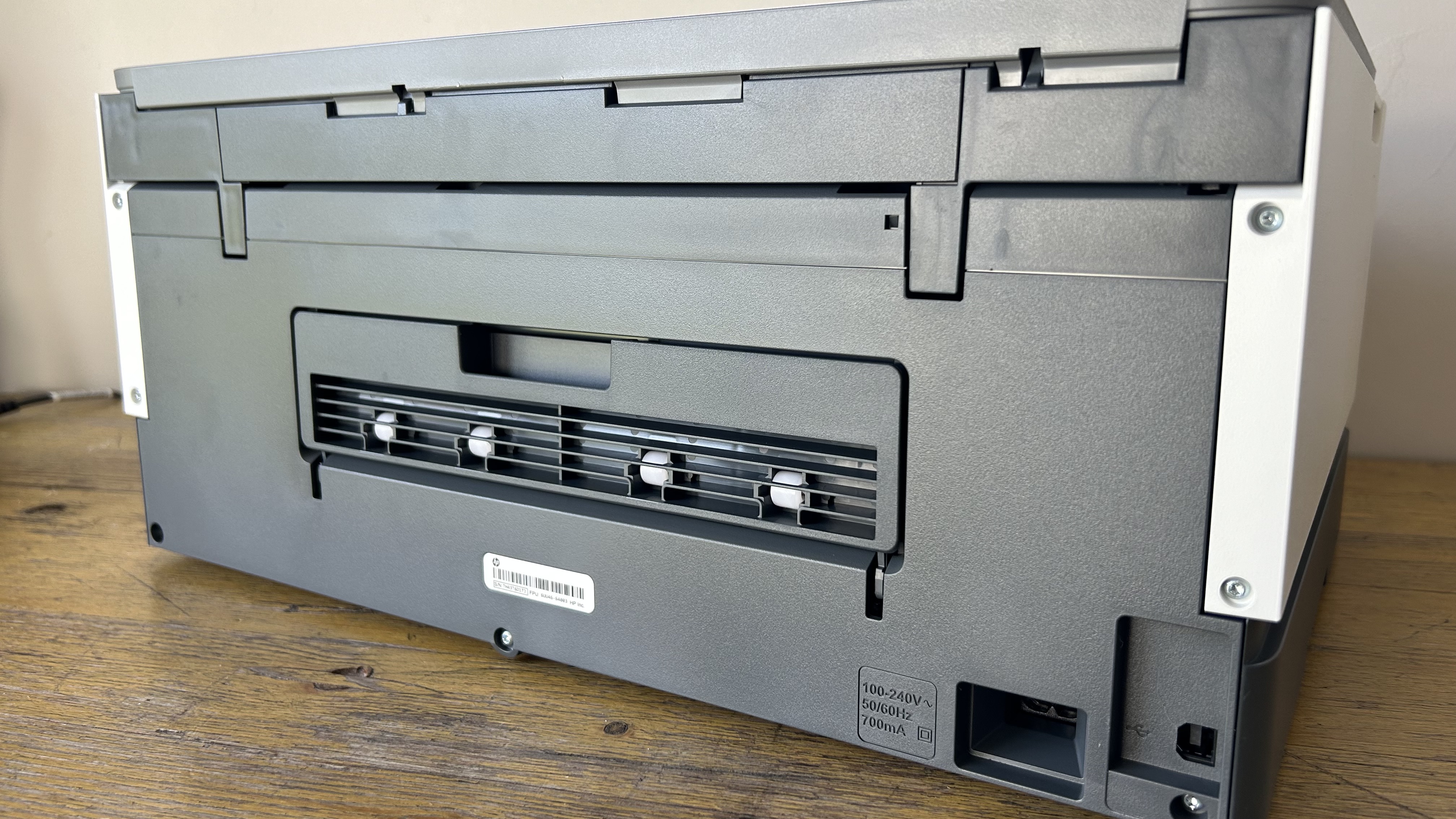
HP’s bottled ink is around 80 percent cheaper than its cartridge ink, but it’s essentially the same stuff. In this case, the three colors, cyan, magenta and yellow are dye-based while black is a pigment. That’s quite common with office inkjets where a pigment black, which is more resistant to smudging and fading, works best for black and white text handouts, while dyes are better suited to color images.
There are five or six ink bottles in the box depending on where you purchased the printer. The 135-ml bottle of black ink (HP 32XL) yields 6,000 monochrome pages, while the three 70ml bottles of C/M/Y should yield 8,000 color pages. That’s an order of magnitude more than the ink in one of HP’s inkjet cartridges.
HP Smart Tank 7001: Maintenance
Just like any of the best inkjet printers, ink tank printers don’t like being left unused for long periods because the liquid ink dries on the printhead, clogging the nozzles. To clean it you can usually just run a printhead cleaning cycle or two, and because bottled ink is relatively cheap, that’s less of a problem for supertanks. This printer is somewhat unusual in having two replaceable printheads, one black and one tricolor. Assuming this doesn’t mean they are prone to failing, it suggests that the printer’s operational life can be extended by simply buying new print heads, which are reasonably priced.
HP Smart Tank 7001: Final verdict
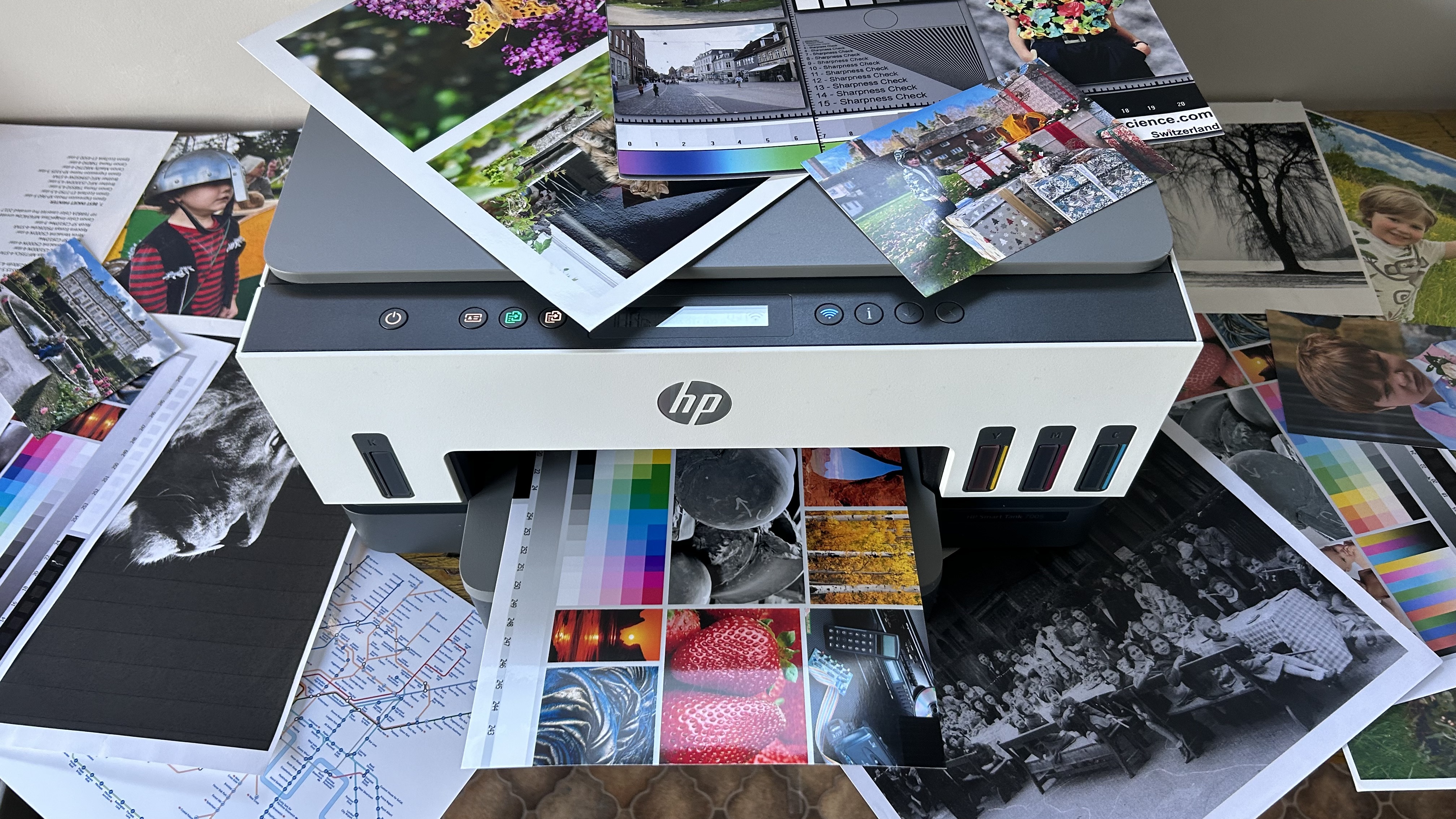
Supertank printers often appear overpriced because we’re used to cartridge-based inkjets being subsidized by the inflated cost of their cartridges, but that razor-and-blades business model does not apply here. Comparing the HP Smart Tank 7001/7005 with other supertanks suggests that it’s pretty fair value. There’s no touchscreen display, no NFC, no ADF and only one input, but it does have other features. There’s a decent Letter-sized scanner and strong wireless connectivity with dual-band wi-fi and Bluetooth. The 250-sheet paper capacity beats its nearest supertank rivals and there’s a useful amount of bottled ink in the box.
It prints both monochrome and color documents well and fairly quickly too, but it’s not great with photographs, which look a bit garish. And it’s not great at handling paper stock. The 200g/m2 card limitation is very light and the trouble it had during the test in turning over imperfect sheets of paper while duplexing is a concern. There’s no doubt HP’s bottled ink printer offers better value than a comparable cartridge-bound HP, but it faces strong competition from other supertanks by Canon and Epson. Canon’s equivalent offers better photo quality, while Epson beats HP on overall performance. However, with its higher paper capacity and faster print speed, the HP Smart Tank 7001/7005 is better qualified for an office job.
Find a unit for the home and office in our round-up of the best home printers around.







